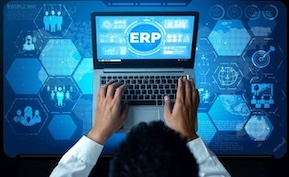ERP
Cloud vs On-Prem ERP in 2025: A TCO Model CFOs Can Trust

Why TCO for ERP Is Harder Than It Looks
Choosing between cloud and on-prem ERP isn’t just about subscription versus perpetual licenses. Hidden costs lurk in infrastructure, upgrades, integrations, security, support, downtime, and talent. A credible decision requires a total cost of ownership (TCO) model that captures these factors over a realistic horizon—typically 5 to 7 years.
Without a structured model, debates devolve into anecdotes: “Cloud is always cheaper” or “On-prem is more controllable.” Neither is universally true. The right answer depends on your scale, regulatory environment, and internal capabilities.
Key Cost Categories to Include
Regardless of deployment model, include these buckets in your TCO:
- Licensing / Subscription: perpetual licenses + maintenance, or SaaS subscriptions by user, module, or usage.
- Infrastructure: hardware, data centers, networking, cloud IaaS/PaaS (if applicable).
- Implementation & Upgrades: partner fees, internal project staff, testing, training, and change management.
- Operations & Support: admin staff, monitoring, incident response, backups, and DR.
- Security & Compliance: audits, certifications, tooling, and remediation effort.
- Downtime & Risk: financial impact of outages, failed upgrades, or security incidents.
Build line items under each category for cloud and on-prem scenarios, then apply realistic assumptions, not vendor marketing.
How Cloud ERP Changes the Cost Profile
With cloud ERP, you trade capital expenditure for operating expenditure. Benefits include:
- No hardware purchases or data center overhead for the ERP itself.
- Vendor-managed updates, patches, and basic infrastructure security.
- Elastic capacity—especially useful for seasonal businesses or growth companies.
- Faster time-to-value with pre-configured industry templates.
But cloud also introduces considerations:
- Integration costs with on-prem systems via secure connectivity.
- Data egress fees and storage tiers for large historical datasets.
- Vendor lock-in risk if exit paths and data export models are unclear.
On-Prem ERP: Control at a Price
On-premise ERP remains attractive for organizations with strict data residency or latency requirements, or those with heavy customization that doesn’t fit SaaS models. Key characteristics:
- Higher upfront capex for servers, storage, and networking.
- Responsibility for OS patching, database tuning, and application upgrades.
- Greater control over timing of major releases—but at the cost of longer cycles.
- Potentially higher staffing needs for infrastructure, security, and DBAs.
Security and compliance costs can be significant if you need to maintain SOC 2, ISO 27001, or industry-specific certifications yourself.
Hybrid and Hosted Models
Many organizations end up with hybrid scenarios: a core ERP in the cloud and satellite systems on-prem, or vice versa. Others use a hosted model (managed by a partner). Your TCO model should capture:
- Connectivity costs between environments (VPNs, dedicated links, SD-WAN).
- Duplication of security controls and monitoring tools.
- Potential complexity-driven cost—for example, troubleshooting across multiple providers.
Modeling Risk and Downtime
Risk is where purely financial spreadsheets often fall short. Include estimated costs for:
- Planned and unplanned downtime (lost revenue, idle labor, delayed shipments).
- Upgrade failures and rollbacks in on-prem environments.
- Security incidents: incident response, legal fees, fines, reputational damage.
Cloud vendors may offer higher baseline SLAs and resilience, but you still need to understand shared responsibility. On-prem setups may have single points of failure if DR hasn’t been invested in.
The Option Value of Agility
A robust TCO model also quantifies option value—the financial benefit of moving quickly when business needs change. Cloud ERP can support:
- Faster expansion into new regions or entities.
- Quicker adoption of new modules or innovations.
- Simpler integration with other SaaS tools and data platforms.
On-prem ERP offers option value in customization and control. If you have highly specialized processes that generate competitive advantage, and you have the talent to maintain them, that control can be worth real money.
Scenario Analysis: Growth, M&A, and Downsizing
Don’t stop at a single base-case scenario. Model at least three:
- Growth scenario: headcount and transaction volume double over 5 years.
- M&A scenario: integration of acquired entities every 2–3 years.
- Downsizing scenario: contraction due to market conditions.
Cloud’s pay-as-you-go model may shine in expansion and contraction scenarios, while on-prem might look more stable at steady state. Run sensitivity analyses so the board sees how robust each choice is to change.
Frequently Overlooked Costs
- Change management and training: refresh cycles for new releases.
- Shadow IT and workarounds: spreadsheets and side systems born from slow ERP change.
- Talent availability: recruiting experienced on-prem admins vs. cloud-savvy engineers.
- Exit costs: data migration and process re-platforming if you switch vendors later.
Building a CFO-Grade TCO Model
To make your model credible:
- Use clear assumptions for inflation, FX, capacity growth, and contract terms.
- Present a 5–7 year view with capex/opex separation and cash-flow timing.
- Highlight qualitative factors like compliance posture, vendor roadmap, and internal capability fit.
- Invite Finance, IT, and business stakeholders to review and adjust assumptions collaboratively.
Decision Guardrails
Every organization is different, but some patterns emerge:
- If you lack deep infrastructure and security capabilities, cloud ERP often lowers risk and accelerates innovation.
- If you operate under strict data residency rules or have ultra-low latency requirements, a hybrid or on-prem model may be necessary.
- If you’re planning frequent acquisitions, cloud’s scalability and template-based rollouts can be a major advantage.
Final Thoughts
A thoughtful ERP TCO model doesn’t guarantee an easy decision, but it replaces gut feeling with structured trade-offs. By comparing cloud and on-prem across cost, risk, agility, and capability, your team can choose the path that supports strategy—not just this year’s budget.






